PinotFile: 7.10 January 14, 2009
|
Wine is Good News for Health in 2008
 There were a large number of studies published in 2008 that continue to document the health benefits of moderate wine consumption. The modern wine industry cannot tout these findings to the public in part because of events that transpired back in 1991. That was the year that Morley Safer ran a televised feature on 60 Minutes about The French Paradox. Safer was a Francophile and his neighbor was the French-born chef, Jacque Pépin. Pepin reportedly told him that the French had a very low rate of cardiovascular disease and Safer consulted with Curtis Ellison, M.D., Professor of Preventive Medicine and Epidemiology at Boston University School of Medicine. Ellison told him the French secret was wine, food and lifestyle. Although the French consumed a diet high in saturated fat, smoked more, and exercised less than Americans, the French had 40% fewer heart attacks and lived on average about two and a half years longer. To their advantage, the French consumed moderate amounts of red wine regularly with meals, they ate more fresh fruit and vegetables, they took longer to eat meals and snacked less, they ate less red meat and more cheese, and they used more olive oil and less lard or butter in their cuisine. Ellison told Safer that of all these factors, the link between moderate and regular consumption of wine with meals was strongest and supported by the most scientific evidence. French researcher, Serge Renaud, M.D., PhD, working at the French National Institute for Health, had found a relationship between the low rate of cardiovascular disease and moderate wine intake in the French population and supported Ellison’s beliefs. On the now famous French Paradox telecast which aired on November 17, 1991, Safer asked Renaud to what he would attribute the observed decreased mortality from cardiovascular disease among the French. Renaud answered, “I think it is the alcohol.” Safer ended the show holding up a glass of red wine. The next day, the demand for red wine took off. Within a few weeks after the program aired, sales of red wine in the United States, which had been stagnant, shot up 40%. Gallo Winery had to put their leading seller, Hearty Burgundy, on allocation.
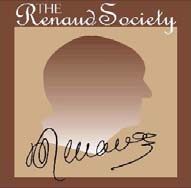 This was a seminal event that piqued the public’s interest about the possible health benefits of wine but also set off a controversy. Winemakers like Robert Mondavi and others wanted to promote the health benefits of wine following this 1991 telecast, but the U.S. Bureau of Alcohol, Tobacco and Firearms (B.A.T.F.) blocked all attempts to do this. The B.A.T.F. even challenged Renaud to show them his data. It was unlawful to make any health claims for wine on wine labels or in wine advertising. The Wine Institute, which is a California organization composed of wineries and affiliated business, sided with the B.A.T.F. and strongly advised against any publicity proclaiming wine a healthy drink. To this day, the Wine Institute, follows the 2005 guidelines of the U.S. Departments of Agriculture and Health and Human Services that state, “The consumption of alcohol can have beneficial or harmful effects depending on the amount consumed, age and other characteristics of the person consuming the alcohol and specifics of the situation and with the guidelines’ caution against excessive consumption and its assertion that there are some individuals who should not drink.” The Wine Institute discourages member wineries from promoting the health benefits of wine. Currently, federal money cannot be used to support alcohol research other than treatment and addiction and funding is only available for viticultural studies and examination of grapes, raisins and other non-vinification topics. The United Kingdom-based Alcohol in Moderation (AIM) and The Desert Heart Foundation and its associated doctor support group, the Reynaud Society, are among the few voices that are promoting the truth about the responsible consumption of alcohol, and particularly wine, to the public. Serge Renaud published his now famous paper in the medical journal, The Lancet on June 20, 1992. Titled “Wine, alcohol, platelets and the French paradox for coronary heart disease.” Renaud’s study involved 34.000 middle-aged men living in eastern France. In this paper, he emphasized, “At the moderate intake of alcohol associated with the prevention of coronary heart disease, the mechanism of protection seems to be at least partly, a hemostatic effect, possibly a decrease in platelet reactivity.” It soon became clear to Renaud and other researchers that the French paradox was also explained by polyphenols present in wine.
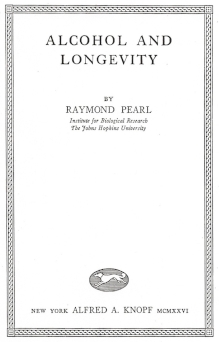 The first report of the beneficial effect of moderate alcohol consumption and of the relationship between alcohol intake and mortality dates to 1926 when biologist Raymond Pearl presented his well-researched statistical data regarding the effect of alcohol on longevity. Pearl was investigating the effects of alcohol on chicken progeny at the Institute for Biological Research at The Johns Hopkins University, when he discovered that, “Alcoholized fowls lived longer than those who got nothing but plain food and water.” He later collected information on a large group of white, working class people, ages 15 to 99 years, in Baltimore, Maryland, studying the factors involved in the etiology of tuberculosis but including the alcohol intake of the study individuals. His conclusion, published in 1926 in the book Alcohol and Longevity, was, “In a fairly large and homogeneous sample of the working class population of Baltimore, the moderate drinking of alcoholic beverages did not shorten life. On the contrary moderate steady drinkers exhibited somewhat lower rates of mortality, and greater expectation of life than did abstainers. Those persons in this experience who were heavy drinkers of alcoholic beverages exhibited considerably increased rates of mortality and diminished longevity, as compared with abstainers or moderate drinkers.” Since Pearl’s book was published at a time when temperance sentiment was rampant, it was no wonder that it was heavily criticized. As a nod to the tone of sentiment of the time, Pearl notes in his conclusion, “But it certainly gives no support to the almost universal belief that alcohol always shortens life, even in moderate quantities.” He also exclaims, “The results are unquestionably novel.” Pearl’s carefully collected scientific data was presented in life tables in his book but the information clearly validates the now well-known J-shaped curve relationship between daily alcohol intake and total mortality. Pearl, himself, never published or described the J-shaped curve, but Ronald F. Unzelman, M.D., who wrote about Pearl in the newsletter of the Wayward Tendrils, a society of wine book collectors, transferred one of the age-specific death rate tables to a graph that he was kind enough to share with me (see below).
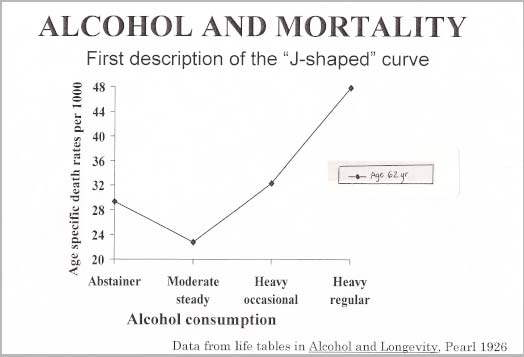 In the 1970s, Arthur Klatsky, M.D., working at Kaiser Permanente in Northern California, confirmed the Jshaped curve. The composite alcohol-total mortality relationship shows the lowest risk among drinkers who take less than 3 drinks per day. This curve has been validated by extensive epidemiological studies and holds true for cardiovascular disease, some cancers, and cognitive dysfunction as well.
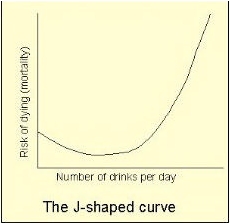 Most of the health benefits of wine have been attributed to alcohol and phenolic compounds found in the skin and seeds of red grapes. Although many studies suggest it is the phenols in wine that give it superior health benefits over other alcoholic beverages, this has not been completely proven. Phenols are found in all plants and are known as phytoalexins or phytochemicals, compounds that have biological activity in the human body. They are particularly abundant in fruits such as strawberries, blueberries, pomegranates and grapes, and vegetables, grains, peanuts, green tea, coffee, olive oil and chocolate. Without getting too technical, there are two categories of phenolic compounds: non-flavonoids and flavonoids. There are three classes of flavonoids: flavanols, flavonols and anthocyanins. Reserveratrol is the best known anthocyanin and is found primarily in the skin of red grapes where it is produced in response to stresses such as fungal infections. Flavonols are only present in the outer layers of grapes and, like resveratrol, act as a sun screen, absorbing ultraviolet light. Catechin is the most well known flavanol but the group also includes quercetin, proanthocyanidins and condensed tannins. Phenols contain at least one aromatic ring (six connected carbon atoms who share electrons) with polyphenols having multiple rings. Polyphenols are antioxidative because they have a catechol group on the aromatic ring that attracts oxygen-free radicals from other molecules. As a result, the polyphenols scavenge free radicals removing them so they cannot oxidize other compounds. This antioxidant effect is at least partially responsible for the observed cardioprotection and other health benefits of polyphenols. Red wine in particular has high levels of polyphenols, but levels vary among different grape varieties and vineyard locations. Pinot Noir and Cabernet Sauvignon have a high level of seed flavonols. One glass of red wine has 200 mg of phenolic compounds compared to 40 mg for white wine, primarily due to the anthocyanins present in the skin of red grapes. Some wines can have high polyphenol levels because of the region in which the grapes are grown and the winemaking techniques employed. For example, resveratrol levels are increased in red wines from Bodega Catena Zepata in Argentina where the vineyards are at a high altitude. Presumably, the elevated concentration of polyphenols in the grapes develop as a protective response to the intense ultraviolet light at the increased altitudes. Much of the scientific research on wine polyphenols has focused on the so-called “miracle molecule,” resveratrol. Most of this research has centered on mice and in vitro (outside the living organism) studies. Resveratrol has been demonstrated to lower cholesterol, reduce inflammation, decrease pain, prevent hearing loss, and increase the life expectancy of fruit flies, earthworms, mice and strains of yeast in the lab. It has also been shown to protect against cancer, heart disease and diabetes mellitus. Resveratrol may turn out to have a roll in the treatment of cancer as well. It is postulated by researchers that resveratrol works by making active the SRT1 gene which in turn stimulates the formation of new mitochondria and improves functioning of existing mitochondria in muscles and other tissues.
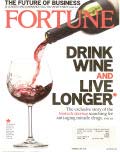 Sirtris Pharmaceuticals makes a laboratory-created form of resveratrol known as SRT501 that is being developed as a possible treatment for certain diseases such as MELAS (mitochondrial myopathy, encephalopathy, lactic acidosis and stroke-like episodes). The therapeutic effect of SRT501 is through the improvement in functioning of mitochondria in cells. The drug may have applications in many diseases of aging which show impaired mitochondrial activity in cells. In July, 2008, GlaxoSmithKline bought Sirtris Pharmaceuticals for $720 million. SRT501 has been well publicized in the press. Researchers at the Northwest Agricultural and Forestry University in Yangling, Shaani Province, China (Plant Cell, Tissue and Organ Culture, October 2007), have genetically engineered a super vine by supplying it with an extra gene from a wild Chinese vine. Vitus pseudoreticulate has an unusual variant of the stilbene synthese gene which triggers resveratrol production. This grape variety has six times more resveratrol than normal. The research team plans to make wine from the genetically modified vine, although the main application is to bestow more resistance to fungus on vines. The United States is projected to lead the world in volume of wine consumed by the year 2010. Appropriate education of the public (and physicians) about regular, moderate and responsible drinking of wine could have a highly beneficial effect on the health of this country. It is estimated that 71 million Americans have cardiovascular disease, or 1 in 3, and cardiovascular disease is our country’s number one killer. A very large amount of credible literature has accumulated in the last 25 years that supports that which educated observers have sensed for a long time, namely, that wine in moderation is good for heart health. Hermann Smith- Johannson, a cross-country skier who lived to the ripe age of 103 years said, “The secret to a long life is to stay busy, get plenty of exercise and don’t drink too much. Then again, don’t drink too little.” The actions of beneficial wine compounds are complex and poorly understood at this time. The effects on the cardiovascular system alone are numerous including antioxidant actions (preventing oxidation of molecules such as LDL or low-density lipoprotein, the so-called “bad cholesterol”), suppressing endothelin-1, a substance produced by the lining of blood vessels that promotes atherosclerosis or hardening of the arteries, direct effects such as increasing HDL or high-density lipoprotein, the so-called “good cholesterol,” and anti-thrombotic or anticoagulation effects that reduce the “stickiness” of platelets. The beneficial effects of wine compounds reach beyond cardioprotection and include reduction in carcinogenesis, improved cognitive function, favorable metabolic changes and a number of other health-enhancing effects. In the following pages, I will summarize peer-reviewed, scientific studies published in 2008 that contribute to our current understanding of the roles that alcohol and particularly wine play in our health. The good news far outweighed the bad news in favor of the health benefits of wine, but the importance of moderation in wine intake cannot be overemphasized. Over drinking can lead to a number of health problems including sudden death from high blood pressure, heart attack, cardiac arrhythmia or stroke, cardiac myopathy, cirrhosis of the liver, acute alcoholic hepatitis, osteoporosis, chronic gastritis, irritable bowel syndrome, tremors, insomnia, nightmares and night sweats, dementia, and cancer of the mouth pharynx, larynx, esophagus, stomach, liver, colon and breast. You are better off not drinking at all than drinking too much. In addition, it is important to emphasize that moderate intake of wine by itself is not a panacea. It is critical that wine be consumed regularly with meals and that meals include vegetables and fruits, whole-grain foods, fish, lean meats, low-fat dairy products, limited portions of saturated fat, trans-fat and cholesterol, minimal salt intake and no smoking. Regular exercise and weight control are important as well as part of a healthy lifestyle. For the purposes of understanding “moderate drinking,” which is frequently referenced in the following research articles, a few definitions are in order. In the United States, a standard drink (or unit) contains 17.7 ml of ethanol which is equivalent to 12 ounces of beer, 5 ounces of wine and a shot of 80-proof distilled spirits. A full bottle of wine contains about 5 to 7 drinks depending on the alcohol percentage. To determine the number of drinks in a bottle, multiple 750 ml by the alcohol percentage and divide by 17.7. For example, one drink from a bottle of wine that is 13% alcohol will equal 750 ml x 0.13 = 97.50 divided by 17.7 = 5.5 drinks. A bottle of 16% alcohol wine will contain 6.8 drinks or about 1 more drink than a bottle with 13% alcohol. The point is, alcohol percentage does make a difference when you are looking to drink in moderation. The definition of levels of drinking vary, but usually moderate drinking is defined as no more than 1 drink per day for women and 2 drinks per day for men. Heavy drinking is defined as 3 or more drinks per day. Obviously, one would want to scale back the volume of drinking when imbibing a wine with a higher alcohol percentage or reach for a lower alcohol wine to insure that you stay within the confines of “moderation.”
Brief Abstracts of Wine & Health Research Studies in 2008
As you digest the myriad of research studies to follow, I want to leave you with this important disclaimer:
Consult with your doctor about the effects of wine consumption on your health.
Longevity European Heart Journal (January 2008) The chances of a longer life are increased when moderate consumption of alcohol and moderate exercise are combined than by either of the two activities done separately. The highest risk of death in the study group were those who were physically inactive and heavy drinkers and the lowest risk of death were those who exercised regularly and drank moderately. This is the first study to look at the combination of exercise and alcohol intake. Regardless of level of physical activity, men and women who drank moderately had the lowest risk of death from all causes. Public Library of Science ONE (June 2008). Resveratrol even when consumed in moderate amounts can protect the heart from aging. Low doses of resveratrol (4.9 mg per kg of body weight, about the amount found in 3-4 glasses of red wine) added to the diets of mice kept their hearts healthier longer. This study approached the question of just how much resveratrol is required in the human diet to produce its healthy effects. The authors of this study feel as little as one glass of red wine a day may be sufficient to replicate the same findings of this research, opening the possibility that dietary supplementation with resveratrol may oppose the majority of gene-induced alterations in the aging heart. Cell Metabolism (July 2008). Resveratrol prevents aging changes in bones, eyes, kidneys, heart and other muscles in mice without lengthening the lifespan of the animals. The amounts of resveratrol used in the study far exceeded what a person would obtain through normal eating and drinking habits. The authors feel that resveratrol may have a more marked effect on humans and may even extend life span. Polyphenols may play a role in retarding the changes associated with aging of the skin. The antioxidant action of polyphenols can retard the oxidative chemical reaction in skin cells caused by free radicals that leads to wrinkling, sagging, lines, dark spots and the loss of tone of the skin with age. Free radicals originate from ultraviolet rays and pollution, dietary fat, cigarette smoke and stress. Joseph Vercauteren, an expert on polyphenols, has stated that antioxidants from grape seeds are 10,000 times more effective than vitamin E in fighting free radicals. Several skin-care companies have developed products from grape seeds, grape juice, red vine leaf and shoot extracts, wine sap and wine yeast. The companies supplying these vinotherapy products include Caudalle, Dior’s L’Or de Vie and L’Occitane from France, and 29 Cosmetics, California North’s Appellation Spa and Davi Skin from California. Vinotherapy spa treatments that include grape seed scrubs, grape seed oil messages and wine and grape seed body wraps are available worldwide. Although the effectiveness of vinotherapy has not been established through scientific studies, it has been shown that resveratrol can be absorbed through the skin. Taiwanese researchers reported in the Biological & Pharmaceutical Bulletin (May, 2008) that the most effective way to transmit resveratrol to the body is by way of a patch according to their experiments done on mice. Metabolism of resveratrol is slower on the skin compared to the stomach, the half-life of resveratrol is longer and its effects stronger when absorbed through the skin. Besides preventing aging changes in the skin, polyphenols may have therapeutic implications for the prevention of ultraviolet exposure and skin cancers.
Cardiovascular Disease American J of Epidemiology (January 2008). Moderate drinkers who drank one to thirteen servings of alcohol per week were 44 percent less likely to develop arterial disease of the lower extremities. Non drinkers and heavy drinkers had a similar higher risk Atherosclerosis (March 2008). Quercetin reduces inflammation associated with cardiovascular disease. American Journal of Medicine (March 2008). A ten-year study found that non drinkers in their mid-40s to mid-60s, even those who never drank previously, and who started drinking moderately, lowered their risk of heart attack by up to 68 percent. Also, those who drank wine were less likely to have cardiovascular disease such as coronary artery disease and myocardial infarction than those who drank beer or spirits. The authors of the study recommend a heart-healthy diet that can include limited alcohol intake. This is in contradistinction to the American Heart Association recommendations which state that nondrinkers should not begin drinking alcohol in middle age due to possible ill effects. The study did not followup patients after the four year study so longer term effects are not known. Hypertension (April 2008). Postmenopausal women are more at risk for high blood pressure than men of the same age. This study found that polyphenols in red wine can potentially be a treatment for post-menopausal hypertension and vascular complications. A rat model was used in which menopause was duplicated by removing the rats’ ovaries which caused their blood pressure to rise. Half of the rats were fed a diet that contained red-wine compounds including polyphenols such as resveratrol for five weeks. The high blood pressure was eliminated in rats that received the red-wine compound treatment and a pathological examination revealed their blood vessels had healthier linings, more relaxed aortas and less oxidative stress. The mechanism of action of the red-wine polyphenols in reducing high blood pressure is unknown. Nutrition (July-August 2008). Spanish researches found that both fiber and antioxidants in Tempranillo grape reduce blood pressure and cholesterol better than other sources of dietary fiber. The subjects ingested a Tempranillo-based dietary fiber product. American Journal of Health Promotion (September-October 2008). Researchers in Spain found among volunteers that wine drinkers who adhered on average to the Mediterranean diet had a lower risk of cardiovascular disease than drinkers of other types of alcohol who adhered to a similar diet. The conclusion was that it is wine and not the Mediterranean diet per se that has the protective effect on cardiovascular disease. Metabolic Syndrome and Related Disorders (October 2008). Italian researchers found that sirtuins may help repair cell damage in diabetics who have had a heart attack. When a moderate amount of red wine was taken daily by patients undergoing treatment, ventricular function improved. Journal of Gerontology: Biological Sciences (October 2008). Rats were fed a diet high in salt to induce hypertension and then were given grape powder in their diet. The beneficial effects included lowered blood pressure and reduced vascular inflammation. The authors of this study believe that it is flavonoids in the grape powder that directly affect hypertension due either to actions on cell function or through antioxidant effects. Nutrition Research (November 2008). A review of 26 research studies on polyphenols in grapes. Some studies found that patients treated with grape seed extracts had improved blood flow and lowered cholesterol levels. Another study showed that patients with coronary heart disease had improved circulation and hypertensive patients had lowered blood pressure. Other studies on rats and dogs showed a reduced number of blood clots and heart arrhythmias when the animals were fed resveratrol as part of their diet. American Journal of Clinical Nutrition (December 2008). High dietary and blood omega-3 fatty acids are protective against coronary heart disease and sudden cardiac death. A study of 1604 subjects, ages 25 to 65 years old in Italy, Belgium and England, found that alcohol intake was associated with higher plasma and red blood cell concentrations of omega-3 fatty acids. It is postulated that polyphenols in wine might exert these effects and part of alcohol-induced cardioprotection may be mediated through increased omega-3 fatty acids. British Journal of Nutrition (December 2008). Moderate ethanol drinking and n-3 (omega-3) fatty acids have been associated with low cardiac mortality. This is the first animal study confirming the interaction of alcohol drinking with n-3 fatty acids. The authors found no harmful effect of moderate ethanol drinking on the heart of rats studied, rather a significant cardioprotection. Journal of American Medical Association (December 2008). Among healthy middle-aged women, consumption of up to 2 alcoholic beverages a day was not associated with an increased risk of incident atrial fibrillation. Heavier consumption of 2 or more drinks per day, however, was associated with a small but statistically significant increased risk of atrial fibrillation. This is the first study to show woman have a higher risk of atrial fibrillation secondary to alcohol intake. Commentary on atrial fibrillation. Both acute and chronic alcohol use have been associated with cardiac arrhythmia, in particular atrial fibrillation, or so-called ‘holiday heart syndrome.’ Epidemiological, clinical and experimental studies have attempted to elucidate the mechanisms involved in this association. However, because most of these studies have shown conflicting results, the connection between ethanol and atrial arrhythmia remains controversial.
Cognitive Function (Brain) American Journal of Epidemiology (March 2008). Several epidemiological studies indicate that moderate consumption of red wine is associated with a lower incidence of dementia and Alzheimer’s disease. Women in Sweden who drink wine in moderation every week were 70% less likely to suffer from dementia. This 34-year study found that women who drank beer or spirits had only a 15 to 20 percent less incidence of dementia. It would appear that compounds other than ethanol contribute to the beneficial effect of wine on dementia. In addition, women who drank moderately lived longer. The Journal of Neuroscience (May 2008). Using mice which had been genetically modified to exhibit signs of Alzheimer’s disease, this study found that a naturally derived grape seed polyphenolic extract can significantly inhibit Alzheimer’s disease type cognitive deterioration. The polyphenols in the extract prevented the deposition of beta-amyloid plaques in the brains of the mice that are associated with Alzheimer’s disease in humans. The study suggests that grape seed-derived polyphenolics may be useful agents to prevent or treat Alzheimer’s disease. A similar study is planned on humans. The sponsors of this study hope to create a grape seed pill that could replace wine in patients who cannot have alcohol in their diet. Archives of Neurology (October 2008). This study found that moderate alcohol consumption was not protective against normal age related differences in total brain volume. Even people who drank lightly had a slightly smaller brain than non drinkers. The more alcohol consumed, the smaller the total brain volume, especially in women.
Liver Hepatology (June 2008). Researchers discovered that people who drink up to one glass of wine a day are not causing damage to their liver and are decreasing their risk of non alcoholic fatty liver disease (NAFLD). NAFLD is an accumulation of fat in the liver that is the most common liver disease in the United States. The odds of having NAFLD were reduced by 50 percent in people who drank one glass of wine a day. Beer and spirits drinkers were four times more likely to develop the disease when compared to wine drinkers. It is not clear if the benefits were due to alcohol or non-alcohol components of wine but the study hints of a major role of the latter. American Journal of Physiology – Gastrointestinal and Liver Physiology (October 2008). Resveratrol reduces the amount of fat produced in the livers of mice fed high levels of alcohol. Also, resveratrol seems to increase the rate at which already stored liver fat is metabolized. A combination of ethanol and resveratrol had a greater effect than resveratrol alone. The results are tempered by the fact that the mice received a daily quantity of resveratrol equal to that found in several hundred bottles of red wine. Alcohol alone is thought to cause fat buildup in the liver by deactivating the enzyme sirtuin that is associated with the metabolism of fat. It is thought that resveratrol stimulates genes that are responsible for the production and activity of sirtuin. The authors of the study recommended abstinence in the problem drinker since the effects of alcohol abuse go far beyond the effects on the liver. For the moderate drinker, wine is a better choice than liquor because of its resveratrol content. A concentrated form of resveratrol may accomplish the same effect for beer or liquor drinkers.
Gastrointestinal Journal of Agricultural Food and Chemistry (June 2008). Israeli researchers found that the stomach in rats was better able to digest meat in the presence of red wine. When hydroperoxides and malondialdehyde levels of the stomach contents were measured during and after digestion of red turkey meat, the addition of red wine polyphenols reduced levels of hydroperoxide and malondialdehyde. Also, malondialdehyde levels in plasma were maintained or reduced following digestion of meat and red wine concentrate compared to meat digestion alone. Hydroperoxides and malondialdehydes are found in meat as well as fried and processed foods and are potentially harmful cytotoxic substances normally released during digestion. The study was repeated with alcohol free red wine and the results were similar indicating polyphenols in red wine are responsible.
Joints Annals of Rheumatic Disease (June 2008). Moderate wine consumption (five drinks per week) lowers the risk of rheumatoid arthritis by up to 50% compared to those who drank little or no alcohol. The results were the same for both men and women. The study also found that smoking increased the risk in those with a genetic susceptibility to rheumatoid arthritis.
Metabolic Journal of Food Biochemistry(February 2008). Red wine and tea inhibit the enzyme alpha-glucosidase, a contributor to sugar buildup in type 2 diabetics allowing diabetics to metabolize sugars and starches more effectively. The authors recommend one to two glasses of red wine daily and four to five glasses of tea as well as a range of whole foods to maximize phenol levels. Meeting of Endocrine Society in San Francisco (June 15 2008). A German study found resveratrol counteracts obesity by limiting the number of fat cells produced by stem cells. The authors of the study found that resveratrol acts similar to caloric restriction (a reduction by 30 to 40 percent in calorie intake) that has been shown in mammals to have health benefits. Reservatrol may have a roll in treating obesity or preventing obesity. Cell Metabolism (November 2008) Mice fed a high-fat diet and treated with SRT1720, a drug designed by Sirtris Phramaceuticals that mimics resveratrol, did not become obese. Triglyceride and cholesterol levels were reduced and the mice could run for a longer time than the control group. Angiology (December-January 2008). A study of 4,153 adults in Greece found that mild (one and a half or less drinks per day) and moderate (one and a half to three drinks per day) alcohol intake reduced the risk of developing so-called metabolic syndrome. This syndrome consists of an array of disorders that can cause heart disease and diabetes mellitus. Heavy drinkers (three and half or more drinks per day) were 25 percent more likely to develop metabolic syndrome. When the group was studied specifically for heart disease, wine was found to have the greatest benefit. Moderate drinkers were 58% less likely to develop heart disease than abstainers and beer and spirits drinkers were 48% and 41% less likely. Heavy drinkers had a high risk of heart disease regardless of the type of alcoholic drink they preferred.
Infectious Disease American Journal of Physiology - Regulatory, Integrative and Comparative Physiology (August 2008). This study on mice was divided into two groups with one group receiving water and the other group was given Tang spiked with 12.5 mg per kg of quercetin. The average red table wine contains 8.4 mg of quercetin per kg. One group given water and one group given quercetin were exercised vigorously on a treadmill until exhausted for three days. All groups were then infected with influenza virus and observed. The results indicate that quercetin protects rats against influenza, especially after a physical workout. It is postulated that quercetin may block replication of the flu virus. Short-term quercetin feedings may have value in endurance athletes and soldiers by lessening the impact of rigorous exercise on susceptibility to respiratory infection. Journal of Food Science (September 2007). Mark A. Daeschel, an Oregon State university food scientist, found that a cleanser derived from wine components is effective against E. coli and staphylococcus and may provide a commercial alternative to present disinfectants that contain bleach and ammonia and create a use for low-quality and surplus wine.
Cancer Advances in Experimental Medicine and Biology (March 2008) This study showed that resveratrol may enhance the efficacy of chemotherapy treatments. This laboratory study on pancreatic cancer cells would indicate that patients receiving chemotherapy who normally would be advised to abstain from alcohol should not necessarily avoid red wine. Cancer Prevention Research (July 2008). Resveratrol inhibits the metabolism of estrogen which in turn protects cells from becoming cancerous, even in small doses equal to the amounts in an average glass of red wine. In a laboratory culture study, resveratrol suppressed the abnormal cell formation that leads to most types of breast cancer. Resveratrol induces an enzyme, quinone reductase, that reduces estrogen metabolite back to an inactive form. By making estrogen inactive, resveratrol decreases the associated risk. Cancer Epidemiology Biomarkers & Prevention (October 2008). A Kaiser Permanente group studied male's health patterns through surveys and found that men who drank red wine regularly had a reduced risk of lung cancer. Even smokers who drank red wine were 60 percent less likely to develop lung cancer compared with non-drinking smokers. Moderate white wine drinkers had only a slightly less risk of developing lung cancer compared to non-drinking smokers. Those smokers who drank beer or liquor had no reduced risk of lung cancer. It would appear that it is an antioxidant in red wine that protects against lung cancer, especially in smokers. Dietary factors also come into play because red wine drinkers tend to eat more fruits and vegetables. The authors advise smokers to quite because men who drink red wine moderately and continue to smoke have a greater risk of lung cancer than nonsmokers. The results of this study need to be verified by other research because the study group of men who drank red wine had the fewest number of smokers. Nutrition Research (October 2008). Studies on mice injected with breast cancer cells and then fed polyphenols extracted from Merlot grapes or wine found that the tumors in the mice had grown much less than in the mice that did not receive the polyphenols. Grapes had more effect than wine, presumably because of the higher polyphenol concentration. Apparently, polyphenols enable enzymes in the body that decrease the buildup of toxins resulting from hormones. The researchers plan to study other grape varieties including Pinot Noir. American Association of Cancer Research (AACR) Meeting (April 2008). Regular consumption of alcohol, even in moderate amounts, resulted in an increased relative risk of breast cancer in postmenopausal women. In women that drank wine, 1-3 servings caused a 20% increased risk and more than 3 servings led to a 41% greater risk than non drinking postmenopausal women. It has been theorized that alcohol influences the levels of hormones in postmenopausal women and this in turn may cause breast cells to become cancerous. (This report has not been cleared by the NIH for publication) Annals of Epidemiology (June 2008). A study from the Institut Universitaire de Recherche Clinique in Montpellier found that one glass of wine per day was associated with a 40% lower risk of breast cancer. More than a glass evened the risk out to the same as nondrinkers. Commentary about breast cancer. The last word about breast cancer risk in women has yet to be written. A major global study published in 2002 found that a single glass of wine per day increases a woman’s chances of developing breast cancer by about 6%. This seems trivial when one considers that heart disease causes 10 times as many deaths in women as breast cancer and heart disease deaths exceed breast cancer deaths in every decade of a woman’s life. A diagnosis of breast cancer carries more than a 90% cure rate. Dr. Curtis Ellison, Professor of Medicine and Epidemiology at Boston University Medical School, has stated that data currently available increasingly shows that for women who do not binge drink, have adequate intake of folate and are not on hormone-replacement therapy, the risk of breast cancer appears to increase only for consumers of more than one and a half drinks per day. Ellison feels that small amounts of alcohol lower the risk of the more common causes of death among women such as heart disease, stroke, hip fracture and dementia and outweighs the risk of breast cancer.
Pregnancy International Journal of Epidemiology (October 2008). This study from Great Britain found that children born to mothers who drank 1 to 2 drinks per week or per occasion during pregnancy showed less clinically significant behavioral difficulties or cognitive defects at age 3 years compared with children of abstinent mothers. Pregnant mothers who drank moderately (3 to 6 drinks per week) had children who performed about the same as abstainers. Heavy drinking during pregnancy appeared to be associated with significantly more behavioral problems and cognitive defects in offspring at age 3 years. Commentary on drinking wine during pregnancy. Public health officials in the United States as well as the American College of Obstetricians and Gynecologists and the American Academy of Pediatrics recommend that pregnant women avoid alcohol entirely. Non alcoholic wine or varietal juices are safer choices.
Wine’s Partners in Good HealthChocolate American Journal of Clinical Nutrition (July 2008). The acute ingestion of both solid dark chocolate and liquid cocoa improved vascular endothelial function and lowered blood pressure in overweight adults. Sugar content may attenuate these effects and sugar-free preparations may augment them. British Journal of Nutrition (July 2008). When an antioxidant removed from cocoa bean (Acticoa powder) was given to rats for a year, they showed less age related brain deterioration. The results suggest that Acticoa powder may be helpful in slowing age related brain impairments and perhaps even neurodegenerative diseases. Further studies are planned to elucidate the mechanisms of cocoa polyphenols in neuroprotection and explore their effects in humans. Journal of Nutrition (October 2008). Dark chocolate taken in moderation (half a bar per week) supplies enough antioxidant to reduce the risk of heart attacks. The research studied the amount of chocolate required to lower C-reactive protein (CRP) levels in the blood which is a marker for coronary heart disease and inflammation. Only dark chocolate was included in the study since it has the highest polyphenol levels among the forms of chocolate (milk interferes with the body’s absorption of polyphenols). A J-shaped relationship between dark chocolate consumption and serum CRP was observed. Consumers of up to 1 serving (20 g) of dark chocolate every three days had serum CRP concentrations that were significantly lower than non consumers or high consumers. Green Tea Journal of Nutrition (December 2008). This study evaluated the influence of a green tea catechin beverage on body composition and fat distribution in overweight and obese adults during exercise induced weight loss. The findings suggest that green tea catechin consumption enhances exercise induced changes in abdominal fat and fasting serum triglycerides. Journal of Nutrition (December 2008). There is some epidemiological and animal data that suggests that tea and tea polyphenols may be preventive against various cancers, including breast cancer. This study evaluated the relationship between green tea consumption and breast cancer risk. Compared with nondrinkers, regular drinking of green tea was associated with a slightly decreased risk for breast cancer. Alcohol-free Wine
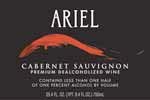 Alcohol-free wine has fewer calories (19-36 calories per 4 ounce serving versus 90-125 calories for alcoholic wines). Alcohol-free wine is made by removing the alcohol through a filter or vacuum process leaving by law less than one-half of one percent alcohol. Ariel Vineyards, whose parent company is J. Lohr Vineyards & Wines, has been making non alcoholic wines since 1985 and produces over 120,000 cases annually available in 22 countries. Alcohol-free wine is ideal for pregnant women, dieters, designated drivers and people who must abstain for health or religious reasons. These wines will not appeal to a drinker of traditional wine since alcohol is critical to the roundness, richness and sweetness of wine. The alcohol-free wines are closer in taste to White Zinfandel and slightly sweet sparkling wine. Still another option for those who like wine, but don’t won’t to take risks during pregnancy, is the First Blush juices which are 100% grape juice made with varietal grapes and 100% alcohol-free. Cabernet Sauvignon, Merlot, Syrah and Chardonnay are available. Alas, no Pinot Noir.
Devils Gulch VineyardThis article is the first of several to follow in upcoming issues focusing on a notable Pinot Noir vineyard in California and Oregon. Marin County in northern California is wedged between Sonoma County to the north and the San Pablo Bay to the south. The appellation’s climate is similar to the Sonoma Coast and has a long history of grape growing. In pre-prohibition times there were extensive plantings in the region and Mission San Rafael Archängel had 100 acres of vineyards in the 1850s, a relatively large acreage for northern California at the time. By the 1890s, San Franciscans often traveled to the Escalle Winery in Larkspur that was established by Frenchman Jean Escalle. Escalle produced over 9,000 cases of wine annually from his 23-acre hillside vineyard and delivered it just like a milk route by a cart and horse named Pedro. Long time Marin resident Helen Wilson recalled, “Escalle was a wonderful place. The French and Italians came here in droves to enjoy themselves on weekends. They brought their children and ate lunch. You could hear them singing all over town!” During Prohibition, the area turned to cattle ranching, dairy farming and various agricultural pursuits. After completion of the Golden Gate Bridge, the more southerly portion of the county developed into a highly coveted residential community. Today Marin County is the most expensive real estate in the country with a median home price over $1 million. The number of dairy farms has dwindled from several hundred to only forty today and much of the land is owned by wealthy ranchers who made small fortunes in diverse fields such as real estate development (Tom Stubbs), publishing (McElvoy family) and films (George Lucas). At present, available property is scarce and what is for sell is in large parcels, much too expensive for grape growers to exploit. Serious winegrowers have resorted to leasing plots of land on the large ranches. Marin has sparked interest for Pinot Noir fanciers. The climate is influenced by two bodies of water: the Pacific Ocean along Marin’s western coast and the San Francisco Bay and its northern extension known as San Pablo Bay along the southern and eastern border. The extremely mild and lengthy growing season is conducive to Pinot Noir. The area is warmer than either Napa or Sonoma in the winter so bud break is early. Rain in the spring is common, however, so yields are low. The risk of rain and fungus at the end of the long growing season can also severely reduce yields. The soils are generally decomposed sandstone that provides superb drainage and high mineral content. In western Marin County, when nature cooperates, the resultant Pinot Noir grapes can be magical with plentiful acidity, low alcohol and very small berries yielding wild and concentrated flavors. Currently there just under 200 total acres of vineyards in Marin County with about 137 acres planted to Pinot Noir, 20 acres of Chardonnay, 10 acres of Cabernet Sauvignon, 4 acres of Riesling and ¼ acre of Gewürztraminer. This amount is minuscule in comparison to Sonoma County which has over 60,000 acres of vineyards, but there is excitement building for this region. Pinot Noir aficionados are always searching for that unique terroir which will give them a different taste and a memorable kick and Marin County is a region that can deliver that experience. The map on the following page shows the location of Marin County depicted as an unlabeled gold-yellow area just south of Sonoma. The appellation is unlabeled presumably because the region receives little notoriety. As President Bush said recently at his final press conference in his frequent mixed metaphor fashion, “They misunderestimate me.” The heart and sole of Marin County viticulture lives in the jeans and cowboy hat of one man - Mark Pasternak. A majority of the vineyards in Marin County were either planted by Mark or are currently managed by him. Mark grew up in Southern California but always dreamed of escaping the city and becoming a farmer. In 1971, at the age of 19, he bought the 65-acre heart of the 873-acre ranch known then as Devils Gulch Ranch. Subsequently, Congress included the ranch within the boundaries set for the expanded Golden Gate Recreation Area in 1980 and bought all but Mark’s 65 acres. The ranch was used as a grade B dairy (producing cream that was sold and skim milk that was fed to hogs) until sometime in the 1940s. From then on until Mark’s acquisition of the property in 1971, it was vacant, used only for grazing cattle. The barn on the property was originally built in 1866 and has been remodeled by Mark twice. Because the ranch was off the grid, a windmill was used for electricity until 1980, when he planted the vineyard and connected to Pacific Gas & Electric to pump water for irrigating. In 2005, he replaced the old windmill with a much larger one that feeds into Pacific Gas & Electric using net-metering just as solar panels do. Around 1978 Mark was dating a young woman who worked at a new restaurant owned by friends. Until that time, he had virtually drank no alcohol but exposure to the restaurant gave him an appreciation for fine wine.
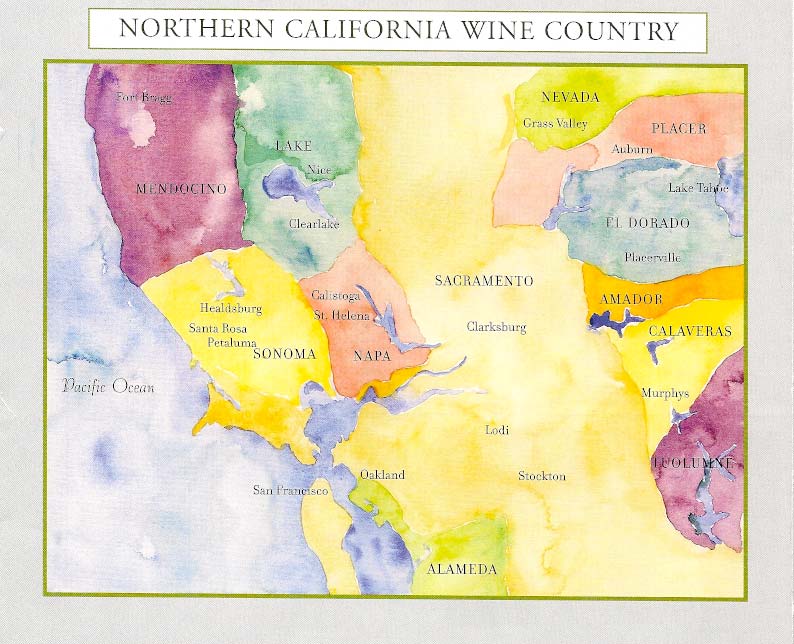 Mark was working as a carpenter and music store manager but wanted to find a legal (sic) crop to produced a source of income from the ranch. He attended a few classes in viticulture given by Rich Thomas at Santa Rosa Junior College and spurred on by his interest, enrolled in the school’s two year viticulture program. Rich Thomas was a firm believer that you could grow grapevines just about everywhere. Mark lured Rich to Devils Gulch Ranch to take a look at the property and Rich felt it was a suitable site for a vineyard although he warned Mark that it was unlikely that still wine grapes would ripen so close to the coast (7 miles as the crow flies). Mark planted 3 acres of Pinot Noir (Martini clone 15 on AXR rootstock) and 4 acres of Chardonnay (clone 4 on AXR rootstock) in 1980 with the intention of selling the grapes to someone wanting to make sparkling wine. Michael Michaud, the winemaker at Chalone, was instrumental in the decision to plant, as Mark’s girlfriend at the time (and now his wife) knew him from her time at University California Davis. Mark traveled to Chalone a number of times to work harvest and party, all the while learning more about viticulture from Michael and his vineyard manager. Devils Gulch Ranch Vineyard is pictured below.
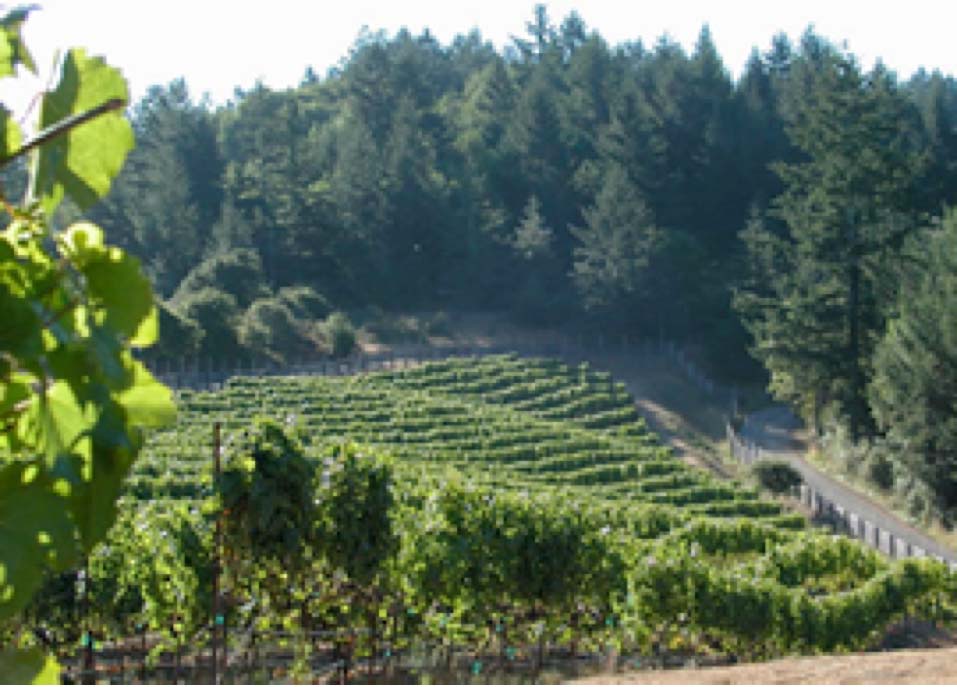 Once the vineyard began producing, Mark hooked up with Terry and Francis Leighton at Kalin Cellars who were located in Marin County. They were planning to craft a “Tete de Cuvée Blanche” late-disgorged sparkling wine and needed grapes from a very cool site. Mark jokes that the Leightons were serious about disgorging late as the 1989 vintage, and perhaps some of the 1987 and 1988 vintages as well, are still on the lees! The sparkling wines made by Kalin Cellars have become cult favorites. In 1999, when Serene Sutcliffe MW was asked, “If you had to choose a New World sparkling wine, whose would it be?” She answered, “The wines from Roederer Estate in California’s Anderson Valley and the sparkler made by Terry Leighton at Kalin Cellars, also in California.” Mark also sold grapes to Schramsberg. Kalin Cellars was a very small producer and in 1990 the crop at Devils Gulch Ranch was too large for them to buy it all. Mark canvassed all the people who were making high-end Pinot Noir at the time including Acacia, Chalone, Etude, Williams Selyem and Gary Farrell. He also spoke to Dan Goldfield, the winemaker at the struggling La Crema Winery in the Russian River Valley. Mark offered to give any takers one-half to one ton of his Pinot Noir (he had 3 extra tons) at no charge to try it out. The only taker was Dan, who took one ton, insisted on paying for it and has been buying Devils Gulch fruit ever since. Michael Michaud at Chalone was kind enough to make wine for Mark out of the remaining fruit from the 1990 vintage. La Crema was acquired by Jess Jackson and under the winemaking leadership of Dan Goldfield, the winery became a success. This was in part due to Dan’s insistence on sourcing cool vineyard sites that in his opinion produced the highest quality Pinot Noir and Chardonnay. Dan moved on to Hartford Court Winery in the mid 1990s and he wanted to produce a Devils Gulch Vineyard single-vineyard Pinot Noir there. The Marin County name had such little cache that the owners discouraged the idea and the wine was put into a reserve bottling. By the 1997 vintage, Dan was able to get his way and Hartford Court released a “Marin County” Pinot Noir for about five years composed entirely of Devils Gulch Ranch grapes. These stellar wines put to rest any doubts about the potential of Marin County grapes to produce high quality Pinot Noir. Since that time, Mark has received frequent inquires from the wineries that weren’t interested back in 1990, as well as several others. In 1998 Mark bought 10 acres adjacent his original vineyard from a neighbor and was able to plant 11 more acres. The new plantings were entirely Pinot Noir consisting of Dijon 114, 115, 667 and 777 on two different rootstocks, namely 3309 and 420A. Two terraced blocks of the new vineyard have slopes that exceed 60% in some areas. The altitude is approximately 700 feet. The terraces face south, while the rest of the vineyard straddles the ridge top. The original plantings were 6 x 10 spacing and the 1998 plantings were 5 x 8 spacing. The original vineyard was cordon pruned to start, then changed to cane pruning on a quadrilateral modified Scott Henry system. The 1998 planting is all VSP trained. The vineyard needs to be bird netted or the birds exact a tremendous toll. The entire vineyard is drip irrigated, using a two hose system to insure that vines in poorer soils (knolls) get adequate water and the vines in better soil (swale) are not over irrigated. Mark produces his own compost from the rabbits, pigs and sheep that he raises. He was one of the first in California to graze his sheep in the vineyard during the winter, a trend that is more commonplace now. He also has used his chickens to reduce the cover crop. Although he is an advocate of organic farming, he has found it necessary to use Roundup sparingly for weed control due to the steepness of Devils Gulch Ranch. The rest of the foliate spray program is done using organic materials. When the 1998 planting started to produce, Dan Goldfield could not use all the fruit, so Mark contact Sean Thackrey, a renowned local winemaker working out of the small town of Bolinas in Marin County. Since that time all the fruit from Devils Gulch Ranch is split fifty-fifty between Dan and Sean. The Devils Gulch Ranch Pinot Noirs had developed quite a devoted cult following and over time may eventually surpass the reputation of Marin’s beloved Grateful Dead.
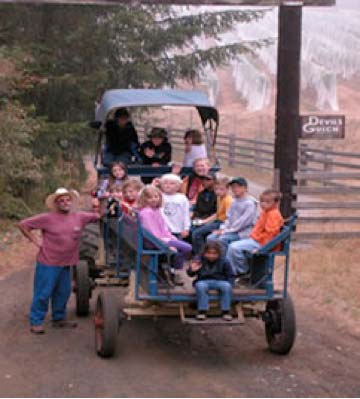 Besides growing grapes, Mark has a diversified ranch and raises rabbits, poultry, lamb, pork and farms produce for retail sale and high-end restaurants. I have been fortunate enough to be invited to dinner at Mark’s ranch when all the food (rabbit, venison, goat, lamb, salmon, asparagus, berries for pie) and wine came from the Devils Gulch Ranch. Mark also breeds performance quarter horses. His spouse, Myriam, is a large animal veterinarian and together they have more than 60 years of combined agricultural experience. Agriculturally oriented skills workshops, after school programs and winter and summer camps for kids ages 6 to 17 are offered. The camps allow city-raised youngsters to explore nature, toil in the gardens, work with animals, learn skills from the past and get plenty dirty. Even adult camps are offered. Visit the website, www.devilsgulchranch.com, for more information about the educational programs offered. Pictured below are the “Three Marin Musketeers”: Mark Pasternak (left), Jonathan Pey of Pey-Marin Vineyards (center) and Stewart Johnson (Kendric Vineyards).
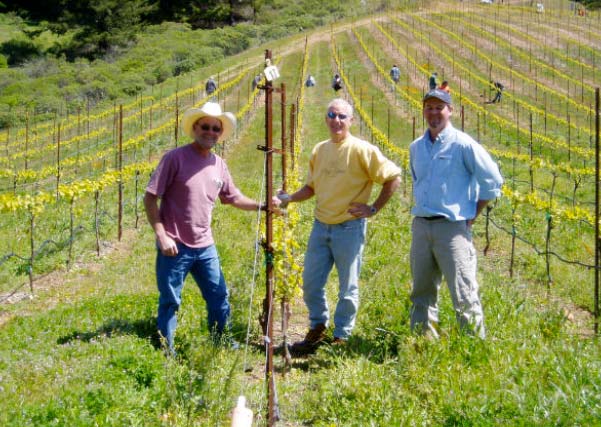 I recently tasted mini-verticals of Dutton-Goldfield and Sean Thackrery Andromeda Devils Gulch Pinot Noirs. It was fascinating to taste two winemakers’ interpretation of the same vineyard. These wines and others I have had in the past have convinced me that this is a unique vineyard site. Dan Goldfield, who has the most experience with Marin County Pinot Noir feels that the wines tend to have a wild character like an olallieberry, rather than the blackberry found in the Russian River Valley. There was no Devils Gulch Ranch Pinot Noir produced in 2005 due to a very tiny crop. Dutton-Goldfield After working closely together as grape grower and winemaker since 1990, Steve Dutton and Dan Goldfield merged their talents to create Dutton-Goldfield Winery in 1998. The winery’s Pinot Noirs, Chardonnays, Zinfandels and Syrahs have received considerable acclaim.
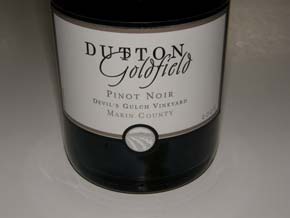 2002 Dutton-Goldfield Devils Gulch Ranch Vineyard Marin County Pinot Noir 13.5% alc., 431cases. · Dark violet color. Extremely attractive nose of crushed berries, confected strawberries, herbs, leather and good barnyard. Exotic wild berry flavors with an appealing earthy overtone, ample acidity, supple tannins and a pleasing, dry finish. This wine delivers the goods like a young wine. Impeccable balance portends a long life ahead and this wine might outlive Dan!
2006 Dutton-Goldfield Devils Gulch Ranch Vineyard Marin County Pinot Noir 13.4% alc., $55 (Magnums are $115). · More red-toned than the 2002 vintage. Bright red berry and red cherry aromas with a touch of herbs and vanilla. Strawberry, cherry and cassis flavors with a nice tang, ripe tannins, and a persistent dry finish with uplifting acidity. A sexy wine with plenty of silkiness and finesse, yet enough structure to age well.
Dutton-Goldfield wines are sold through a mailing list and online at www.duttongoldfield.com. A tasting room is shared with Balleto Vineyards and is located at 5700 Occidental Road in Santa Rosa. 707-823-3887.
Sean Thackrery Sean Thackrery is a talented yet eccentric and quirky winemaker who crafts his distinctive wines at his home in the town of Bolinas. Dressed in bib overalls, he strikes you as a farmer, but when you speak with him, he impresses you as a scholar. If you visit his website, you will find a beautifully composed review of the history of the making and understanding of wine. It is derived from his over 600 volumes of old and ancient texts on wine that form his personal library. He uses these texts as inspiration for his winemaking. Unfortunately, if you want to learn about his wines, you have to look beyond the website! His reputation has been built on blended red wines using Rhone and other varietals. His first Devils Gulch Ranch Pinot Noir was in 2002. His wines are not mainstream and are challenging to adequately describe. The photo below shows Sean at a Marin County Pinot Noir event.
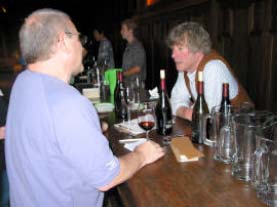
2002 Sean Thackrery Andromeda Devils Gulch Ranch Vineyard Marin County Pinot Noir 15.1% alc., $50-$90 on secondary market. · Pleasing aromas of dark cherry syrup, black raspberries, chocolate, herbs and wet oak. Fully ripened fruit flavors including earth-dusted raspberries and raisins with a touch of aged dark oak in the background. Silky smooth in texture with a good acid cut at the end. This wine has aged gracefully.
 2004 Sean Thackrery Andromeda Devils Gulch Ranch Vineyard Marin County Pinot Noir 15.3% alc., $80 on secondary market. · Similar to the 2002 vintage, but less fruity and fresher. Aromas of fermenting berries, herbs, sassafras and exotic wood. Rich, sweet black raspberry fruit that is well-collared with soft tannins and a long follow-through on a dry finish. The alcohol is nicely integrated.
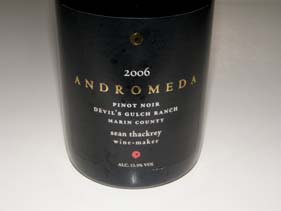 2006 Sean Thackrery Andromeda Devils Gulch Ranch Vineyard Marin County Pinot Noir 13.5% alc., 50. · Quite a departure from the 2002 and 2004 vintages. Much lighter and redder in color. Subdued redder Pinot fruits on a light frame with moderate tannins that need to be shed. Savory herbs add interest.
Sean Thackrery wines are sold primarily through a mailing list with limited retail and foreign distribution. The website is www.wine-maker.net.
Lynmar Revives HospitalityLynmar Estate is a very special place that features one of the most welcoming guest centers that I have ever encountered in my wine country travels over the years. The people are genuine and informative and well trained in hospitality. The venue is comforting and relaxing, offering the visitor a unique wine and gustatory experience. The Fritz family purchased the Quail Hill Vineyard in the Russian River Valley in 1980 and founded Lynmar Winery in 1990. In 2004, the winery launched a five-year investment plan to complete a phased replanting of 71% of the 47-acre Quail Hill Vineyard. Today, the vineyard is 70% Pinot Noir and 30% Chardonnay. A small patch of old vine Swan selection planted in 1974 was retained. The site’s soil consists of Sebastopol sandy loam which has an ideal pH and drainage quality for Pinot Noir and Chardonnay vines. Located in one of the cooler areas of the Russian River Valley, the site experiences coastal fog penetration through the Petaluma Wind Gap. Combined with cooling influences from the Laguna de Santa Rosa, Northern California’s largest complex of freshwater wetlands, the vineyard has a long, cool growing season with bud break typically occurring in mid-March and harvest starting in September.
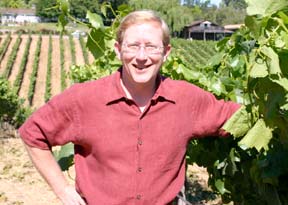 An impressive new winery with barrel storage caves and hospitality center has been added. Winemaker Hugh Chapelle (photo right) has brought Lynmar (now called Lynmar Estate) to a world-class level. Consulting winemaker Paul Hobbs and consulting viticulturist Greg Adams have also contributed to the recent lofty accolades for this winery. The tasteful hospitality center and tasting salon overlooking the estate vineyards is located in Sebastopol. The center is open daily for tasting from 10:00 AM to 5:00 PM. However, to simply drop in for wine tasting is to miss the full hospitality experience offered here. If you can, avail yourselves of the Lynmar Food and Wine Experience or The Estate Tour. The Lynmar Food and Wine Experience ($45 per person) offers a short tour of the culinary and sensory garden on the estate by the gracious staff followed by a sampling of Lynmar Estate reserve wines paired with the winery’s executive chef Sandra Simile’s recipes. A two-course light lunch is offered in a serene setting with a well-set table featuring a seasonal menu. The Estate Tour ($65 per person) is a 2.5 hour indulgence which consists of a hosted tour of the estate, a sampling of Lynmar Estate reserve wines and a gourmet light lunch. I recently indulged with my family and it was one of the most rewarding wine and food experiences we have ever enjoyed together. The Food and Wine Experience and Estate Tour are offered by reservation Thursday through Sunday. The Food and Wine Experience Menu is duplicated on page 17. Lynmar Estate combines the new and old as shown by the hospitality salon on the left on a sunny day and the picturesque old seed barn on the right on a foggy day in December.
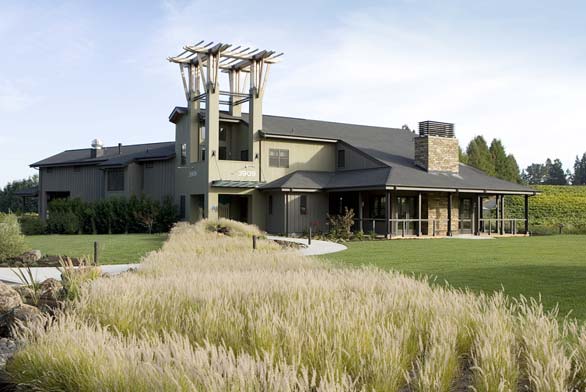 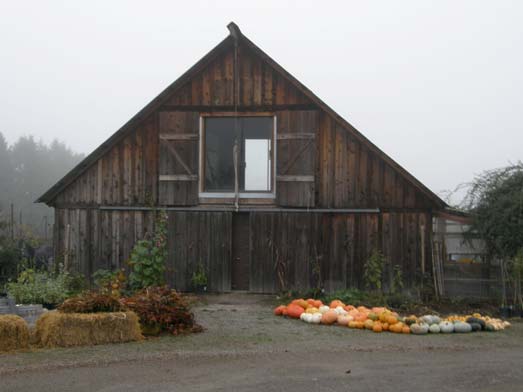 Lynmar Estate is producing striking Chardonnays and Pinot Noirs from both estate and sourced vineyards in the Russian River Valley. If you want to taste a single wine that represents the essence of the Russian River Valley, a quintessential bottling if you will, reach for the 2005 Lynmar Estate Quail Hill Vineyard Russian River Valley Pinot Noir. Pair it with the Lynmar Estate Quail Hill Vineyard Chardonnay and you will think you have died and gone to heaven.
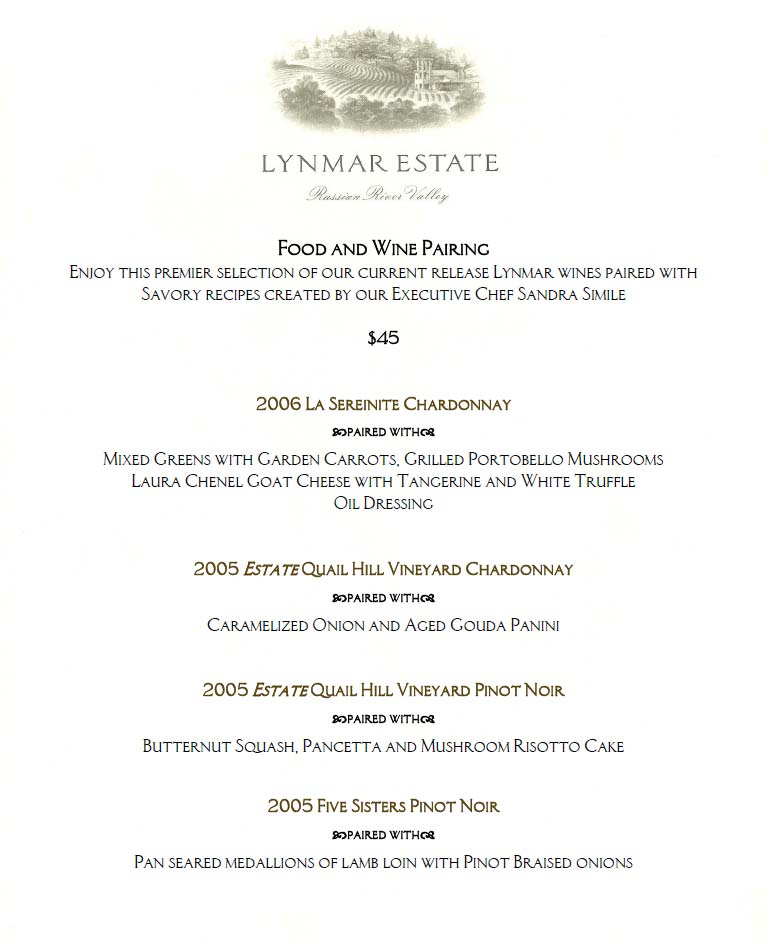 I recently tasted through the current lineup of Lynmar Estate Pinot Noir releases. Winemaking is as follows. Grapes are hand-harvested in the early morning, transported to the winery and hand-sorted before being gently de-stemmed and transferred without pumping into small 2.5 to 5 ton open-top fermenters. Fruit is then cold soaked for 3-10 days at 50ºF before allowing native fermentation to begin. Fermentations are gently punched down 2-4 times per day as needed. Total skin contact time ranges from 9-16 days depending upon the desired extraction for each lot. The grapes are then basket pressed and the new wines are barreled down where secondary, malolactic fermentation occurs over the next several months. Multiple coopers are used, primarily Remond and Francois Freres. The wines are aged 14-16 months in 35%-65% new oak and racking is minimal or not at all, with aging on the lees until the final blend is assembled. The house style is one of impeccable balance, vibrancy and elegance.
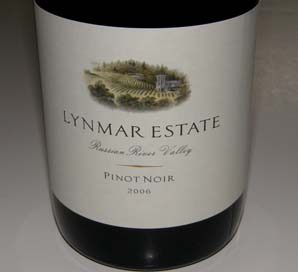 2006 Lynmar Estate Russian River Valley Pinot Noir 14.4% alc., 3,196 cases, $40. This is a blend of lots from Lynmar’s 47-acre Quail Hill Vineyard as well as grapes from local growers. · This wine is a cherry choo-choo. Really attractive cherry aromas with a hint of oak and candied apple lead to a silky core of fresh and bright cherries, an undertone of strawberries and the slightest oak. Soft tannins complete the harmonious picture. For an entry wine, this is stunning.
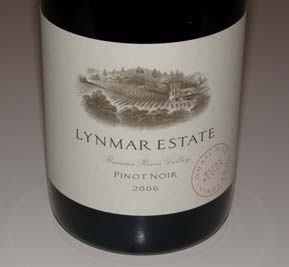 2006 Lynmar Estate Quail Hill Vineyard Bliss Block Russian River Valley Pinot Noir 14.4% alc., 329 cases, $60. The Bliss Block is from a unique part of the estate which is very cool. This is the first block designate from Quail Hill Vineyard since 1999. · A ripe fruit profile on the nose veering toward cardamonspiced cherries and raisins and oak spice. The flavors echo the aromas with an added loamy influence. A balanced wine with supple tannins and a dry finish. Well-crafted but not my cup of tea.
2006 Lynmar Estate Hawk Hill Vineyard Russian River Valley Pinot Noir 14.15% alc., 486 cases, $70. Hawk Hill Vineyard is located 4 miles inland from the Pacific Ocean at the southwestern tip of the Green Valley/Sonoma Coast border. Paul and Vicki Michalczyk farm 6 acres of Dijon and Pommard clone Pinot Noir vines planted in Goldridge soils. The vineyard is subject to considerable coastal influence creating an extended growing season. The final blend is 60% Pommard and 40% Dijon 115 clones. · Berry pie-filling fruits on the nose with subtle oak and Provencal herbs. A delicious olalliberry and boysenberry fruit core fans out on the palate nicely and fine-grained dry tannins and admirable acidity bring the wine into perfect balance. The wine’s finesse makes it easy to snuggle up to.
 2006 Lynmar Estate Zephyr Farms Russian River Valley Pinot Noir 13.9% alc., 236 cases, $70. Zephyr Farms is located at the western border of the Green Valley/Sonoma Coast appellations. Steve Whiteman and Bob Trujox farm 9 acres of Dijon clone Pinot Noir planted in Goldridge soils. The harsh climate results in highly variable yields. Lynmar is the sole recipient of fruit from this vineyard. · Evocative perfume of dark fruits with a hint of sage and seasoned oak. Lip-smacking and succulent dark cherry and berry fruit kissed by toasted oak. Commendable richness and fullness on the palate. Still wearing a mild grip of tannin and will benefit from more time in the bottle.
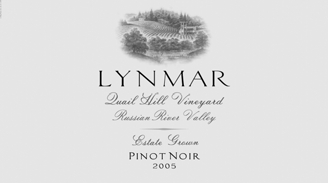 2005 Lynmar Estate Quail Hill Vineyard Russian River Valley Pinot Noir 14.35% alc., 1,419 cases, $60. This wine represents the finest lots from the Quail Hill Vineyard home estate with the core being a small patch of old vine Swan selection planted in 1974. · Ramped up intense black cherry scent with dark chocolate, oak and white pepper lurking in the background. Flamboyant layers of cherry and raspberry fruit with a sidecar of oak and cola. Vivid and clean with no hard edges and leaving an incredibly long and memorable finish. This beauty delivers a little more fullness, richness and intensity than the Russian River Valley bottling and is flat-out great.
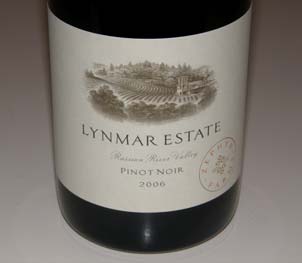 2005 Lynmar Estate Five Sisters Russian River Valley Pinot Noir 14.4% alc., 390 cases, $100. Five Sisters is a tribute to the sibling bond of Lynn Fritz’s five daughters. The wine is a blend of the five best barrels from Lynmar’s Estate and top partner growers. Five vineyard sources are included: Hawk Hill (115 and Pommard) which formed the base of the wine, Jack Hill (115), Ferguson (mixed Dijon), Terra de Promissio (115, 777) and Quail Hill (old vine Swan selection). 10-30% whole clusters were kept in select fermentations, where stem ripeness warranted, to moderate extraction and add complexity. This special wine is produced only when the vintage and quality warrant. · Intense deep black cherry and dark berry aromas touched by oak, herbs and a little good barnyard. Very slow to open up. Almost viscous with intense darker fruits and structure to spare. Still sporting noticeable oak and tannins and not ready for prime time. I would check back in three to five years but if you must drink it now, spend some time with the wine and definitely decant it.
1996 Lynmar Five Sisters Russian River Valley Pinot Noir 14.0% alc.. A blend of the finest barrels from the Quail Hill Vineyard Reserve Block. · This wine has aged royally and is a delight to drink. The color has persisted with only a hint of mahogany showing through. Mature bouquet of raisin, tobacco smoke and a little funk. Demure berry flavors with notes of raisin, marzipan, mocha and subtle oak. Silky in the mouth with an uplifting finish due to complimentary acidity.
Lynmar Estate wines are sold at the tasting room, on the website and through limited retail channels. The hospitality salon is located at 3909 Frei Road in Sebastopol. For reservations for any of the hospitality experiences phone 707-829-3374 x 102. During the warmer summer months, Pizza and Pinot Fridays are scheduled. Ingredients from the Estate garden, local cheeses and gourmet mushrooms are used to create pizzas in a custom-designed wood burning oven (see photo below). Lynmar Estate can also host meetings and private events (contact Elan Fayard, Director of Guest Relations and Events at 707-829-3374). Several photos follow showing the Quail Hill Vineyard with typical Russian River Valley fog in December, the compost pile, the pizza oven, and the old rusting farm truck that adds a touch of character to the surroundings.
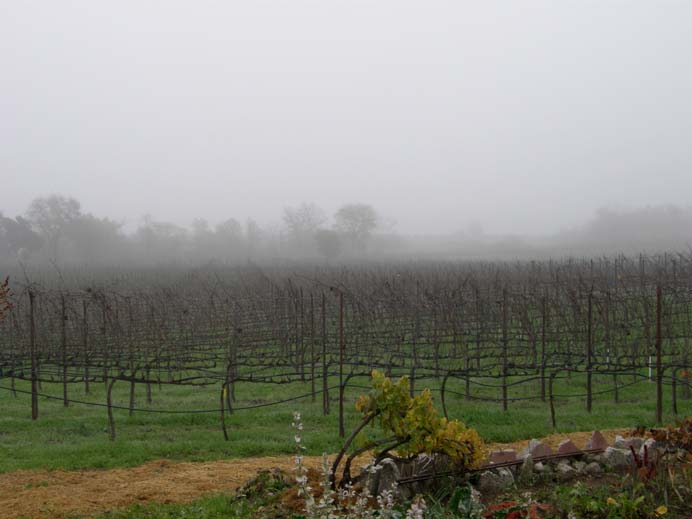
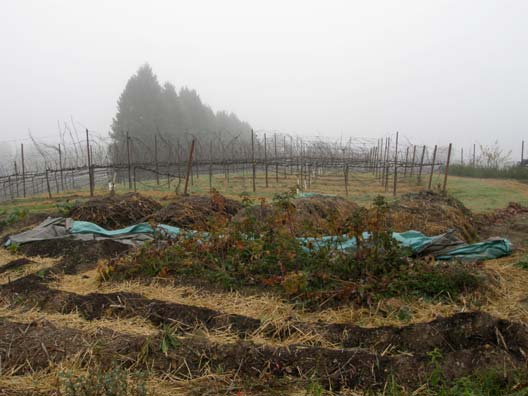 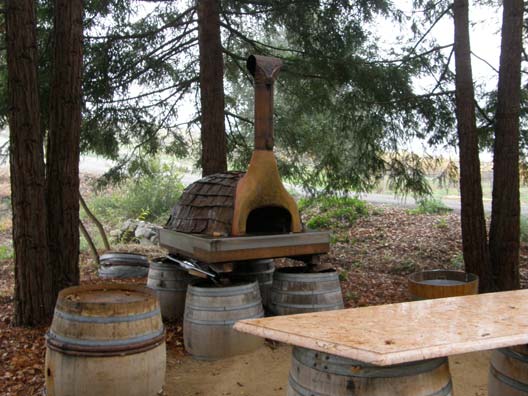
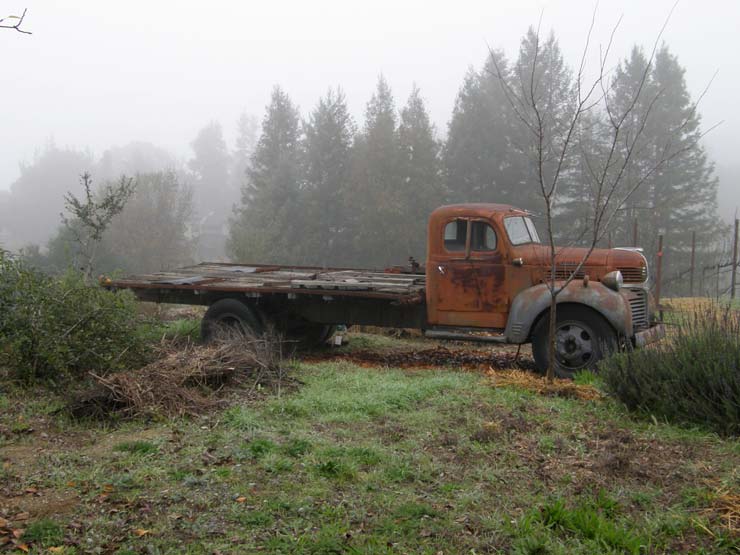
Book Review: The Widow ClicquotOn Brian Loring’s home page for Loring Wine Company he says, “Is there anything worth drinking other than Pinot Noir and Champagne?” I would agree completely except I would add Chardonnay to the mix. Champagne is truly a refreshing libation but it has a number of benefits beyond its taste including a lower alcohol (most Champagnes contain less than 13% alcohol), the absence of significant sulfites, and a palate cleansing effervescence. Revered and highly enjoyable, Champagne is probably one of the least understood wines in the world. A new book, The Widow Clicquot: The Story of a Champagne Empire and the Woman who Ruled It, provides a significant body of valuable information for those wanting to learn more about Champagne. Written by Tilar J. Mazzeo, PhD, this is a scholarly treatise that traces the story of Barbe-Nicole Clicquot Ponsardin, the Grand Lady of Champagne, in the context of the history of Champagne from its origins in England in the 1670s to the 1800s when Champagne became big business. Widowed at the age of 27 with absolutely no business training, Veuve (or Widow) Clicquot transformed a small family wine brokerage into one of the most significant Champagne houses of the 19th century in a little over a decade. By the age of 40, she was one of the wealthiest business entrepreneurs and richest middle class women in all of Europe.
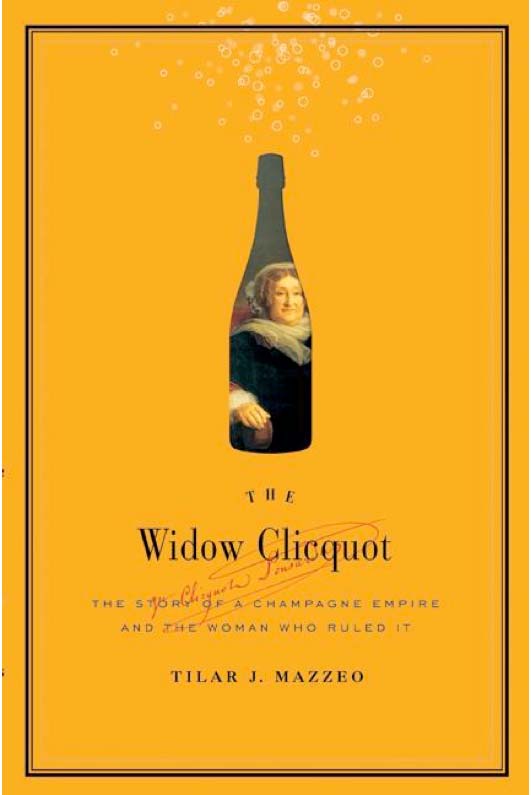 Upon the death of her husband, Francois Clicquot , Barbe-Nicole Clicquot Ponsardin joined Alexandre Jerome Fourneux in a business partnership in 1806 and founded Veuve Clicquot Fourneaux & Co.. She immediately took an active role in the business, participating in the crafting of her own Champagne and within four years was in charge of the business which became Veuve Clicquot Ponsardin & Co.. The Widow Clicquot’s risky decision to arrange to transport her wines from the 1811 or “comet” vintage to Russia for sale after the fall of Napoleon saved her company and led to the internationalization of Champagne. She continued at the helm of Veuve Clicquot Ponsardin & Co. until 1841, when at the age of 64 she retired. To this day, Champagne Veuve Clicquot Ponsardin is the only elite Champagne house with a woman (Madame Cécile Bonnefond) at the helm. In the 1800s everyone knew of the Widow Clicquot, but few understand anything about the woman behind the yellow label. Scant details of her life have been preserved. Her personal letters did not survive and there is little biographical record. It is to the author’s credit that she was able to recreate the life story and provide new insight about this unique woman. Mazzeo does write at times with considerable speculation, but her grasp of history makes the whole story very plausible. The book has extensive scholarly references and bibliography, but only one photo of the Widow Clicquot in her later years and no photos of early Champagne bottles or labels. This book is valuable for the educational information about Champagne that is interjected throughout its pages. Here are just a few of the little known facts about Champagne that I learned: • Champagne was discovered by the British, not the French. Sparkling wine appeared in England by the 1660s, decades before it was sold in France. Wine was shipped from France to England in wooden casks. The British wanted to better preserve the wine so they put the wine in bottles where the wine underwent a secondary fermentation. The British added sugar to the bottles, creating Champagne by the 1670s, a decade before it was produced in France. • Early on, in the 1790s, Champagne was a dessert wine, very sweet, served cold and brownish pink in color due to added brandy and skins of grapes. There were only blanc de noirs (white and red grapes). • Dom Pierre Perignon did not invent Champagne. That was a marketing ploy by the region’s Champagne producers at the 1889 World Exhibition in Paris. In reality, Dom Perignon was given the task of getting rid of bubbles that were ruining still wines of the time. A secondary fermentation occurred in wines stored over the winter in sealed wood casks and when the weather warmed in the spring, a secondary fermentation occurred creating bubbles in the so-called “devil’s wine.” There was little market for sparkling wine at the time. Dom Perignon was a pioneer of blending. • The older a Champagne is, the smaller the bubbles become. Bubbles do not affect taste. Since vintage Champagne is aged extensively creating smaller bubbles, the quality of high quality Champagne is often attributed to small bubbles. • Vintage Champagne must be aged a minimum of 3 years, some of the best are aged 7-8 years. After disgorgement, Champagne rarely improves with cellaring. • The Widow Clicquot discovered remuage, a system of clearing Champagne yeast debris trapped in the bottle after secondary fermentation by riddling.
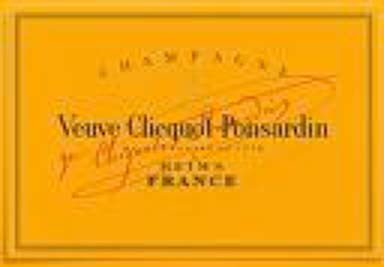 • Barbe-Nicole Clicquot was one of the first winemakers to use labels on her bottles in 1814. • The signature of Barbe-Nicole Clicquot is on every orange label Champagne that bears her name. The Widow Clicquot: The Story of a Champagne Empire and the Woman Who Ruled It is published by Harper Collins Publishers, softcover, 255 pages, $25.95
The 1988 Veuve Clicquot Rare Vintage Recently Disgorged Champagne is now available ($96.99). This wine, which is from a great vintage, was originally released in 1997, but a portion was held back and recently disgorged. It is 1/2 Chardonnay and 1/2 Pinot Noir and Pinot Meunier. The price is very modest considering the age and pedigree of this Champagne and the wine press has been effusive about its stellar quality.
Récoltant ChampagnesRécoltant Champagnes are grower Champagnes, that is, Champagne that is made by the same people who own and farm the grapes. Champagne grandes marques, in contrast, source their three different grapes from many small growers. Allen Meadows and Matt Kramer, among others, have criticized the Champagnes from the well-known luxury houses because they are “more a product of successful marketing than the true substance of the wines.” The grandes marques such as Veuve Clicquot and Moët & Chandon, also known as NMs or negociant manipulant Champagnes, own 12% of the vineyards in Champagne but their sales account for 70% of the total production. Most of their grapes are sourced from the more than 19,000 independent growers in Champagne. Only 5,000 growers produce RMs or récoltant manipulant Champagne. RMs are very limited since by law grower’s can only produce their own Champagne from 5% of their harvest. The RMs cannot blend away their unique identity so they become more of an individualistic product of terroir akin to Burgundy wines. The grower Champagnes will also show more vintage variability since they cannot blend away vintage differences. The first of the grower Champagnes reached the West Coast in the 1970s and were made by Lassalle. Early importers were Terry Theise and Kermit Lynch. According to Jim Duane, a Champagne buyer at Hi-Time Wine Cellars in Costa Mesa, California, about 2,200 récoltant Champagnes are produced each year, but slightly less than 3%, are exported to the United States. Fortunately, the small number tend to be the among the best made and are a good value as well. A Champagne label will clearly indicate by initials the type of producer. For grower Champagnes look for the small initials RM. Some names to look for in RM Champagne include: Chartogne-Taillet, Gaston Chiquet, Pierre Gimmonnet, Egly-Ouriet, Guy Charlemagne, J. Lassale, Larmandier-Bernier and Vilmart & Cie. An excellent review and tasting of grower Champagnes appeared recently at www.sfgate.com (December 12, 2008).
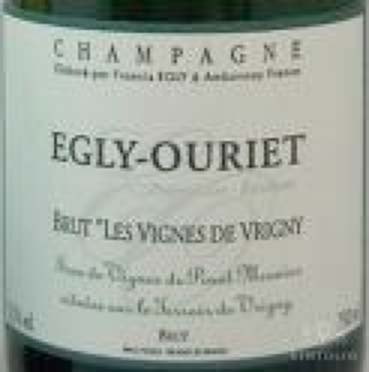
Events Along The Pinot Road in 2009Events that I have committed to attending are marked with a ♦. January 17-18, 2009 Russian River Wine Road Winter Wineland. 17th annual event featuring 115 participating wineries, 11:00 AM to 4:00 PM both days. $40 for the weekend. Visit www.wineroad.com to download the program and read about event details and tickets. February 6-7, 2009 Mornington Peninsula Pinot Noir Celebration. Jancis Robinson MW will be the keynote speaker. This fourth biannual event is chaired by Keith Harris from Yabby Lake Vineyard. Pinot Noir from the United States, France, New Zealand and Australia will be tasted by national and international wine media alongside producers and lovers of Pinot Noir. Visit the website at www.pinot-noir.com.au. February 14, 2009 Monterey River Road Wine Trail Valentine’s Passport. 12 tasting rooms along Monterey’s River Road Wine Trail will be hosting a Passport even. Rare vintages, music, food and discounts on wine. Tickets are $25. Noted participating Pinot Noir producers include Paraiso, Hahn, Pessagno, Ventana, Chalone, Manzoni, San Saba and Blackstone. Visit www.riverroadwinetrail.com for information. February 21, 2009 Anderson Valley International Alsace Festival . Technical Conference in the morning followed by a Grand Tasting of 34 producers from the United States, Alsace, British Columbia and New Zealand. Held at the Boonville Fairgrounds. For information and tickets visit the Anderson Valley Winegrowers website at www.avwines.com. February 28, 2009 San Francisco Chronicle Wine Competition Public Tasting. Festival Pavilion, Fort Mason Center. For information visit www.winejudging.com. 415-777-7167. A wild and crowded event.
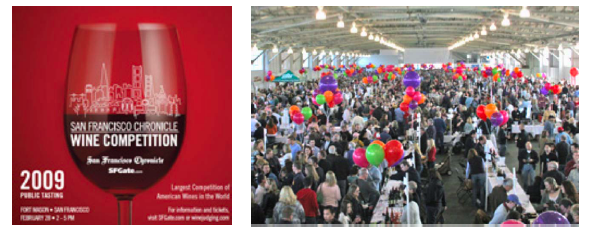 March 6-8, 2009 World of Pinot Noir 9th annual event held in Shell Beach, California featuring Seminars, Focus Tastings, Pinot Noir Reception and Dinner, Burgundian Tasting featuring Wines of Domaine Henri Gouges, Paulée Dinner, and Mondovino Screening. Tickets may be purchased for individual events. A major gathering of Pinot Geeks. For information and tickets visit the website at www.worldofpinotnoir.com. ♦ March 7, 2009 Classic Wines Auction. 25th anniversary of this event will feature special Rex Hill Anniversary Commemorative Magnums of 2007 Willamette Valley Pinot Noir with artwork by famed artist, Michele Russo Magnums may be pre-purchased for $250 each. Winemaker dinners precede the Auction. Classic Wines Auction has raised $19.4 million for Portland area charities benefiting children and families since its inception in 1982. For more information about the auction and other events held by Classic Wines Auction throughout the year, visit www.classicwinesauction.com or call 503-972-0194. March 7-8 and March 14-15, 2009 Russian River Wine Road Presents Barrel Tasting. 31st annual event with many producers offering futures on their barrel samples. $20 per person. For information and tickets, visit www.wineroad.com. March 13-15, 2009 McMinnville Wine and Food Classic. 16th annual event at the Evergreen Aviation Space Museum. Daily admission $15. For information visit www.macwfg.org or phone 503-472-4033.
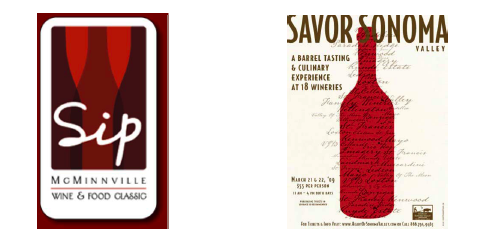 March 21-22, 2009 Savor Sonoma Valley Barrel Tasting. Participating Pinot Noir producers include Eric Ross Winery, Kenwood Vineyards, Landmark, Mayo Family Winery, and Paradise Ridge. $55 per person. For information phone 866-794-WINE or visit www.heartofsonomavalley.com. March 28-29, 2009 Pinot Paradise in the Santa Cruz Mountains. 5th annual celebration of Pinot Noir exclusively grown and produced in the Santa Cruz Mountains. Pinot Pathways on Saturday, March 28 is a self-guided tour of the region’s wineries with barrel and library wine tastings ($25). The Grand Cruz event on Sunday, March 29, is held at the Villa Ragusa in historic downtown Campbell and offers a tasting of Pinot Noirs from over 30 Santa Cruz Mountains wineries along with a silent auction and artisan foods ($55). For tickets and information, visit the Santa Cruz Mountains Winegrowers Association website at www.scmwa.com. A well organized event that offers a unique opportunity to taste the small production Pinot Noirs from the little known wineries tucked away in the Santa Cruz Mountains. The event is not oversold or crowded and is delightful. ♦
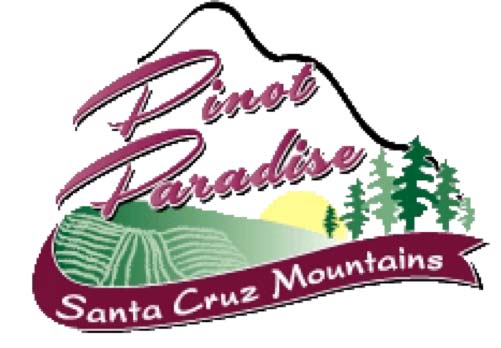 April 5, 2009 Pinot Noir Summit. The culmination of a few months of preliminary tasting of nearly 250 Pinot Noirs from around the world by a varied and expert panel of men and women wine judges. The top 30 wines are presented to the public for them to judge and compare their results with the professional judges. The winery owners and winemakers are present to pour and discuss their wines. Location TBA. Visit the website at www.affairsofthevine.com. for updated information. ♦ April 18, 2009. Santa Barbara County Vintners’ Festival. This annual event features the wines of 100+ members of the Santa Barbara County Vintners’ Association with live music, a silent auction and wine country cuisine ($75 per person). Special Vintners’ Visas to participating wineries are good for four days ($35). For information and tickets visit www.sbcountywines.com.
 April 19, 2009 Celebrate Earth Day in Green Valley. Information available at www.ironhorsevineyards.com or phone 707-887-1507. May 7-9, 2009 Heart’s Delight Wine Tasting & Auction. This 10th annual event is held in Washington, DC and benefits the American Heart Association. Robert Parker will attend to conduct a 2006 vintage Bordeaux tasting on Saturday, May 9. The Vintner’s Dinner will feature first growth Chateau Latour. For information visit www.heartsdelightwineauction.org. This is not a Pinot even but it is for a great cause.
 May 15-17, 2009 Anderson Valley Pinot Noir Festival. The 12th annual event will feature a technical conference on Friday, May 15, a tasting of Pinot Noir from more than 40 wineries at Goldeneye Winery on Saturday, May 16, winemaker dinners Saturday evening in Anderson Valley and on the Mendocino Coast, and winery open houses on Sunday, May 17. Tickets go on sale March 1, 2009. Make your lodging arrangements now as there are limited housing facilities in the Anderson Valley. ♦
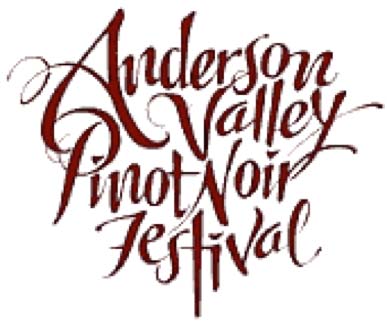 May 30, 2009 Carneros Heritage Fest: Wines, Vines, Woolies and Wetlands. 4th annual celebration hosted by the Carneros Wine Alliance. Proceeds from the event benefit the Carneros Land Stewardship Foundation dedicated to the conservation and preservation of habitat and wetlands in the San Pablo Bay adjacent the Carneros region. Lamb BBQ and Picnic in the Pasture, Carneros vineyard tours, Napa versus Sonoma Young Chef Competition, artisan foods, sheep herding, falconry, music, entertainment, marshes and wetlands tours. Held at The Donum Estate. Tickets available April 1, 2009. Check www.carnerosheritagefest.com for updates. ♦ June 7, 2009 Pinot and Paella. A relaxed and fun event held under the trees at Templeton Community Park in Templeton. Sample paella from Central Coast chefs and Pinot Noir from Paso Robles area wineries. Only 500 tickets sold. For information and tickets: jenn@windwardvineyard.com or phone 805-239-2565. June 20, 2009 Marin County Pinot Noir Celebration. 5th annual celebration to be held at the historic Escalle Winery in Larkspur, California. The event benefits the Marin Agricultural Land Trust (MALT). For information visit the website at www.malt.org. ♦ June 28, 2009 Pinot Days San Francisco. The largest single tasting of premium Pinot Noirs from primarily California and Oregon. Educational seminars and wine dinners as well. Held at Festival Pavilion Fort Mason Center in San Francisco. This is an opportunity to taste small-production Pinot Noirs you have only dreamed about. Check the website at www.pinotdays.com for updates. ♦
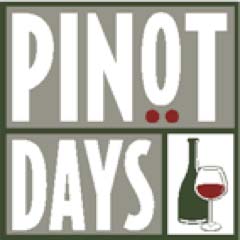 June 17-27, 2009 Russian River Valley Winegrowers Pinot Passion Cruise. 10-night Mediterranean Cruise on Oceania Cruises’ Nautica. Sailing with the group will be Vicki and Paul Michalczyk of Hawk Hill Vineyard, Rod Berglund of Joseph Swan Vineyards, Rick Moshin of Moshin Vineyards and Ben Papapietro of Papapietro-Perry Winery. Prices begin at $3,349 per person including round trip airfare to Europe. For further information, visit the website at www.foodandwinetrails.com
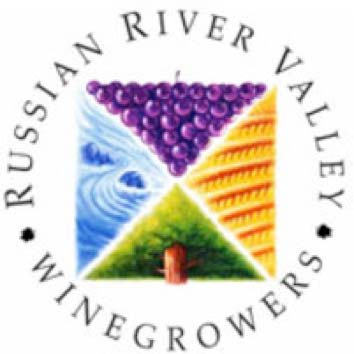 July 9-12, 2009 Central Coast Wine Classic. 25th annual event held at Shell Beach, San Simeon and San Luis Obispo. Visit www.centralcoastwineclassic.org or phone 805-544-1285 for information. Brochure available in March of 2009. July 24-26, 2009 International Pinot Noir Celebration (IPNC). The oldest and still the best Pinot Noir celebration in the New World. The 23rd annual IPNC will feature over 60 of the world’s premier Pinot Noir producers, 40 guest chefs, and special guest, Francois Millet, winemaker of the famed Burgundian estate of Domaine Comte de Vogüé. Tickets are all inclusive for the three day event at $975 per person and are now available online at www.ipnc.org. ♦
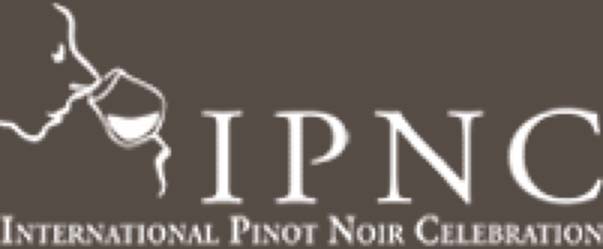 August 14-16, 2009 Russian River Valley Grape to Glass Weekend. Winery open houses, Cinema at MacMurray Ranch, Hog in the Fog BBQ & Silk Purse Auction, Grand Tasting with over 50 wineries pouring and the Wings, Wine and Wind-down Air Show. Tickets go on sale May 1, 2009. The website is www.rrvw.org. November 13-14, 2009 !Salud¡ Oregon Pinot Noir Auction. Preview the 2008 vintage of Oregon Pinot Noir and bid on special cuvées of Pinot Noir from Oregon’s premier Pinot Noir producers. Silent and live auction follows the next day in Portland. Proceeds from the auction benefit the health care of seasonal immigrant vineyard workers in Oregon. A very worthwhile cause and extraordinary event. ♦ November 14, 2009 PinotDays Chicago.
Pinot BriefsBiodynamic Wine School in Burgundy Domaine Leflaive has started the Ecole du Vin et des Terroirs in Puligny-Montrachet. The program is open to both wine professionals and wine lovers who want to learn about biodynamic vine growing and winemaking. The seminars are offered both in French and English and range in length from three hours to two days. For information visit www.ecoleinterroir.org.
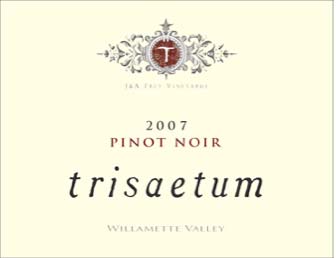 Trisaetum Winery Now Open to Public The long-awaited opening of Trisaetum Vineyards took place over this past Thanksgiving weekend. The 17,000 square-foot gravity-fed winery was designed by owners James and Andrea Frey and winemaker Josh Bergström. Located in the Ribbon Ridge appellation on Ribbon Ridge Road in Newberg, the new winery processed the 2007 harvest. The facility includes a subterranean and dramatically lit barrel cave for wine aging and an abstract expressionist art gallery that displays James Frey’s paintings and photographs. The inaugural 2007 Trisaetum Pinot Noir ($85) is available on the website at www.trisaetum.com. Public tours and tasting are available by appointment by phoning 503-538-9898.
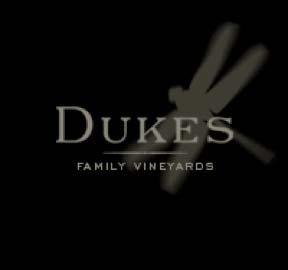 Dukes Family Vineyards New Home A McMinnville barn dating to the 1870s was dismantled and moved by truck to Pat and Jackie Dukes’ property in Amity. The barn was refurbished and will be the future site of their winery, scheduled to be operational in time for the 2010 vintage. Duke Family Vineyards produces Pinot Noir and Syrah from 14 acres. Gary Andrus of Gypsy Dancer was the consulting winemaker for the 2005 to 2007 vintages. Visit the website at www.dukesfamilyvineyards.com.
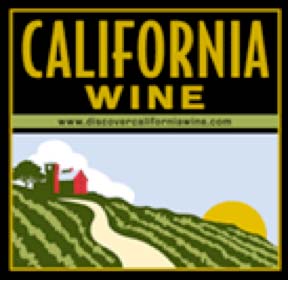 Discover California Wine Website This promotional website is designed to help consumers plan itineraries to California’s wine regions. Searches are available by region, amenities, events and “green” wineries. Users can map and print driving directions for their personal wine touring visits. Visit the website at www.discovercaliforniawine.com. Flowers Vineyards and Winery has New Partner Huneeus Vintners, the wine company which owns Faust, Illumination, Primus, Quintessa and Veramonte, has acquired a significant interest in Flowers Vineyards and Winery located on the true Sonoma Coast. Joan and Walt Flowers will remain involved with the winery. The Flowers property consists of 600 acres of ridge top land two miles inland from the Pacific Ocean with 88 acres planted to vineyards. Gundlach Bundschu has New Winemaker Gundlach Bundschu just celebrated their 150th anniversary in 2008 and have now replaced winemaker Linda Trotta, a 20 year veteran at the winery, with Keith Emerson. Emerson is currently the winemaker for Vineyard 29 in St. Helena and consults for three other respected wineries. Emerson is a 1999 graduate of University California Davis and was an associate winemaker at Gundlach Bundschu from 2000 to 2004. Emerson’s experience with Pinot Noir came during a stint at Palliser Estate in Martinborough, New Zealand. The associate winemakers will be Anne Dempsey and Jessica Koga.
 Able Grape is Excellent Wine Search Engine An up to date online source for wine and viticultural information. Able Grape scours wine-specific web sites and provides quick and direct access to the most useful information. Able Grape is the creation of Doug Cook, a former search executive at Inktomi and Yahoo and dedicated wine enthusiast who is studying for his Masters of Wine degree. There are now 15 million indexed pages of trustworthy wine information. Highly recommended. Visit the website at www.ablegrape.com.
Breathalyzer for Ipod
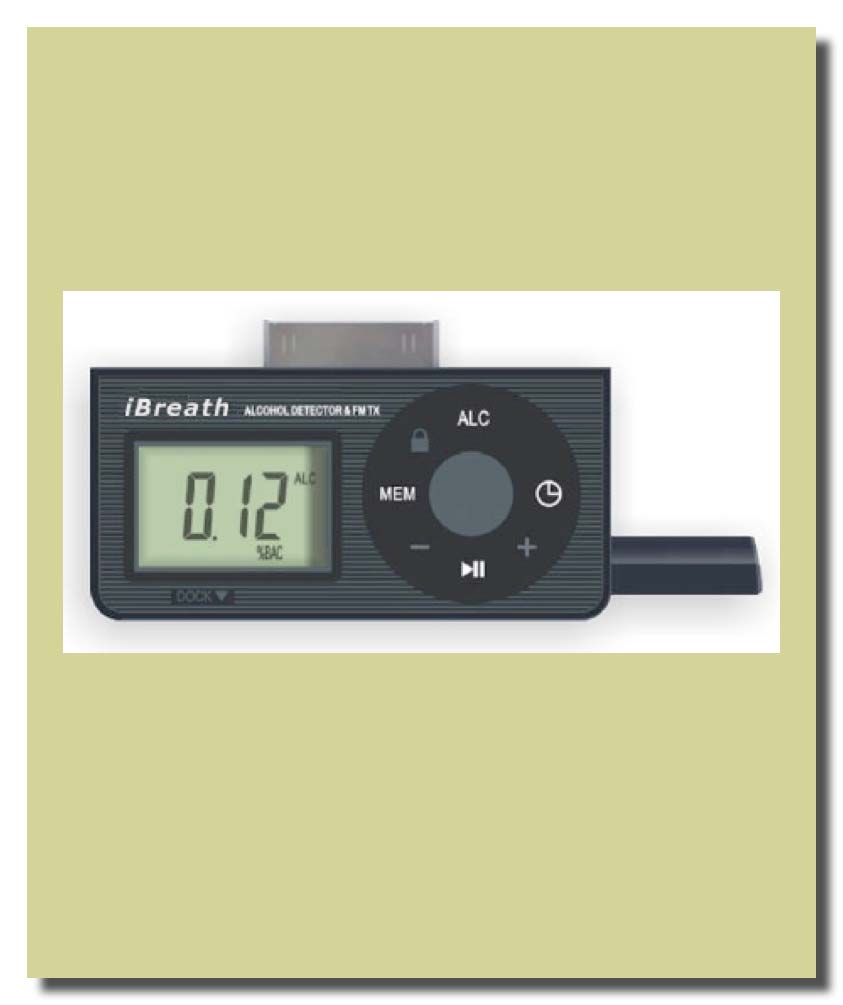 The iBreath is one of many products designed for the iPod and iPhone. This $50 accessory plugs into the dock connector of the iPod converting it into a field sobriety tester. The user exhales into a retractable blow wand and the internal sensor measures the blood-alcohol content within 5 seconds. A reading of 0.08 on the LED screen sets off an alarm, signaling a blood alcohol level that is above the legal limit of intoxication in all 50 states. iBreath claims to offer accuracy within 0.01%, although these claims have been challenged. Other iPhone applications include Last Call which estimates blood-alcohol content, Drunk Dial which prevents people from making phone calls that they might regret in the morning (by administering a timed math test), and Taxi Magic which hails a cab (available in 25 cities in the United States). The iBreath makes an ideal gift especially for drinkers who often underestimate their level of intoxication before driving. It also doubles as an FM transmitter for your car stereo. For further information, visit the website of the creator, www.davidsteele.com.
Practicing Eye Surgery on Grapes As a retired ophthalmologist, I nostalgically look back on my early eye surgery training which was carried out primarily on pig eyes. The current microsurgical method for performing cataract surgery by phacoemulsification involves initially performing a high-quality capsulorhexis or opening in the anterior capsule of the lens. The clouded nucleus of the lens is then removed by manual fragmentation followed by ultrasonic-induced emulsification. The limited availability of synthetic and animal eyes as well as surgical simulators has led to the use of Red Globe grapes as an alternative model for continuous curvilinear capsulorhexis. The Red Globe variety of grape belongs to the species Vitus vinifera and has the largest diameter (up to 1”) round berries of all the red grapes. These table grapes have a firm elastic skin with a mechanical tension similar to that of the aging lens capsule. As reported in the September 2008 issue of the Journal of Cataract and Refractive Surgery, observations on trainees learning grape capsulorhexis, indicate that continuous curvilinear capsulorhexis practice on the Red Globe grape closely simulates the in vivo conditions of the older human lens capsule. The marvelous grape is able to contribute to human health in many beneficial ways. |